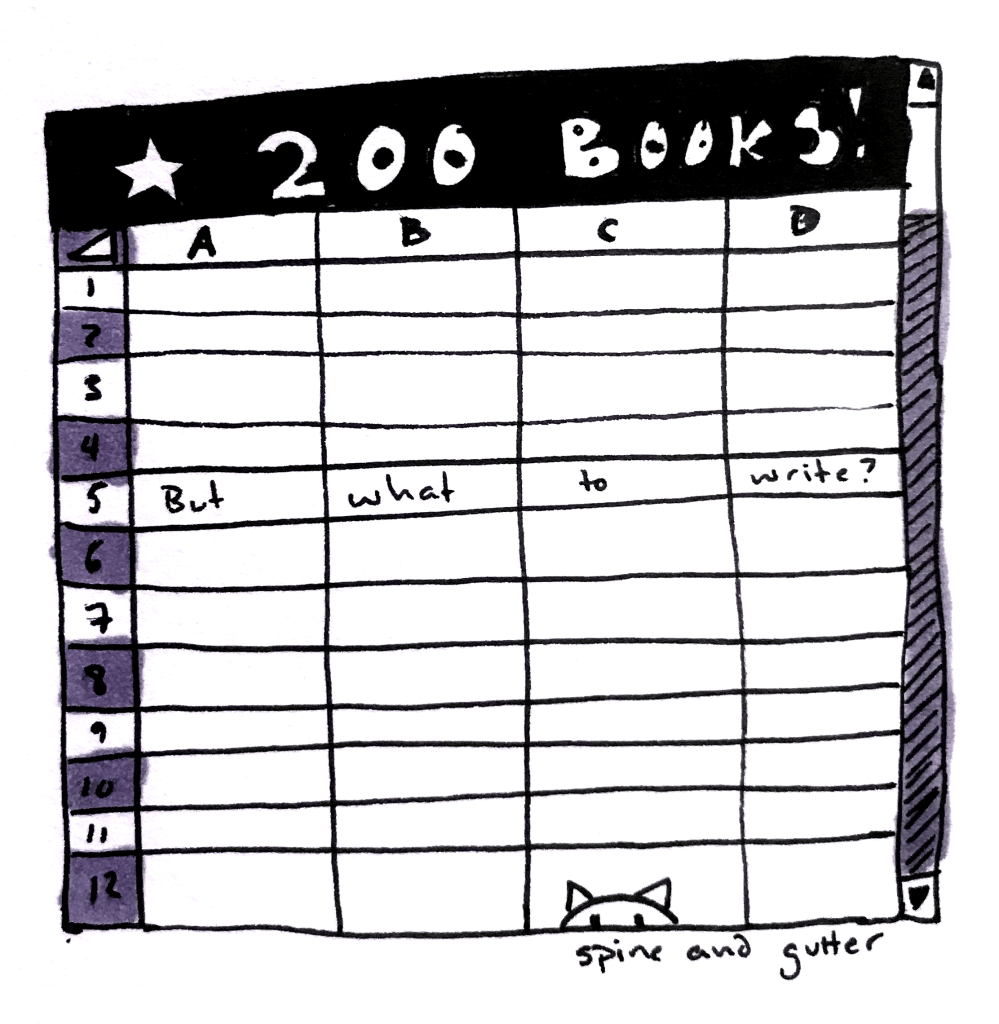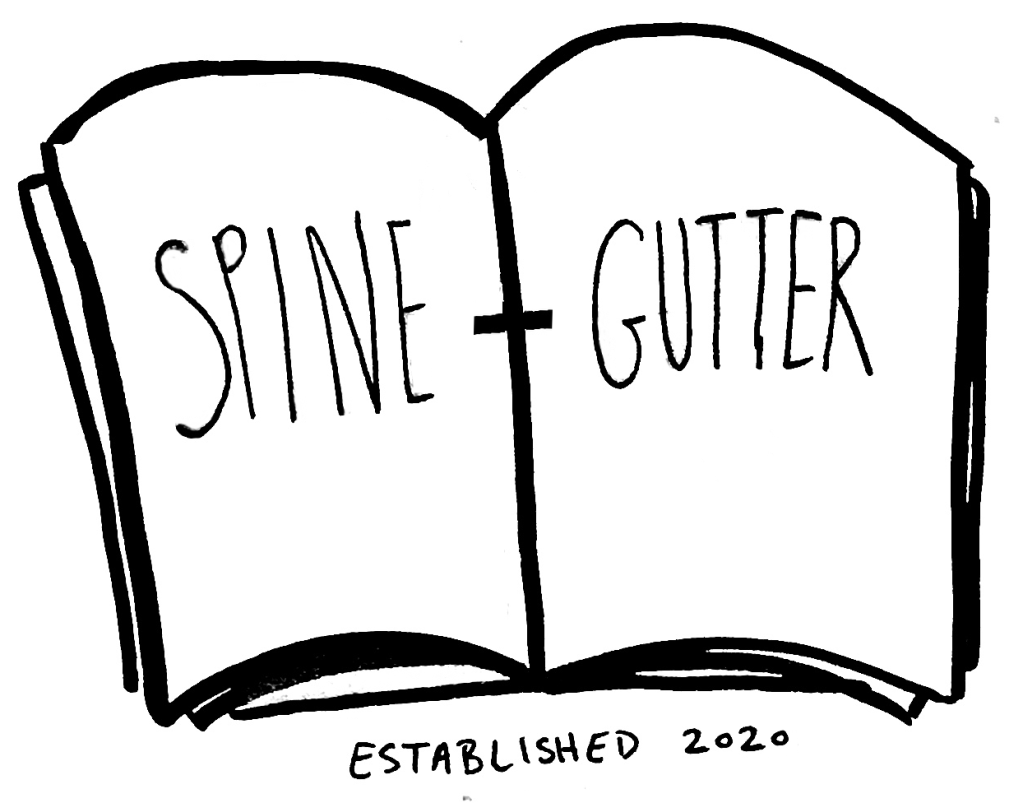
My last post talked about reading 200 books, which was a pretty big deal for me. Of course, though, my relationship with books doesn’t end there. It just started down a brand new path. Take this blog for example.
It’s already three weeks into the new year, but it’s never too late to set resolutions. Like everyone, I have personal goals, but “being a better person” and “cutting out caffeine” don’t have much to do with reading.
My overall goal is to read more in the new year. There’s a trick to setting good goals though, and while I won’t pretend to be some life-expert career coach, I can say “read more” falls short of being sufficient.
What does reading more look like? How will I know when I’ve reached that goal? If I read just one book this year, that technically means I’ve “read more,” but that’s hardly satisfying is it?
When setting a goal, it’s important to pick something clear, achievable, and measurable. So when I say I want to read more, I need to identify ways to validate that success. Otherwise I’m groping vaguely around in the darkness towards some unforeseen end.
Therefore, my specific goal for 2020 to is to read an average of 30 minutes a day.
Average. Math is a beautiful thing. It’s hard for me to admit, but I don’t usually read on a daily basis. My brain likes to cycle through my hobbies, so I usually throw myself deep into one project (or game, or book) at a time until it’s either a) finished or b) boring. That means I tend to read intensely for a few days at a time, take a break, then circle back. I can read several books in a week – it’s just condensed. But the catch is that I can average it all out to about 30 minutes a day, or 183 hours in a year, and I can work on making reading a daily habit at some later point.
Thirty minutes is not an arbitrary number. I was inspired by this video from Max Joseph (of Catfish the TV Show fame) which talks about how to read more books. It’s been a while since I’ve seen the video, but my main take away was that by just adding 30 minutes of reading to your day (which thanks to audiobooks can be done while you’re doing less exciting tasks like getting dressed or commuting – yay multitasking!) you can significantly increase the amount of books you get through. Thirty minutes works out to about 2% of my day, and if I can commit even that much time, I’ll hit milestones like 250 books or even 300 books in a flash.
And while I’m secretly hoping I’ll surpass this 30-minute-average goal, I’m hesitant to push for more. I suffered a lot when reading became an assignment, and I don’t want to do anything to make this goal seem like a chore. There’s no need to over-achieve here.
I actually have more than one reading goal for this year though. The second one I’ve set for myself is to read more diverse literature.
In breaking down the 200 books I’ve already read, I realized that an overwhelming number of them were written by white authors, predominately male. This shocked me because I had figured my reading list was more well-rounded. But I’ve come to realize my perception was badly skewed. The books that I had read from POC authors, for example, stood out so much that I figured there were more of them than there actually were.
Reading diverse literature is important. It helps foster empathy, develops critical thinking, and helps one considerate their own identity. There are a lot of articles about it on the internet, including this one by Swoonreads that I like. A lot of these articles talk specifically about children’s literature, but it’s important for adults to branch out in their reading, too. If all of your literature comes out of a small white box, you’ll start to think your world is contained in that small white box, too.
That being said, there are also a crazy number of talented authors that get overlooked because of the way the literary landscape is made up, and this is just one way to discover some good stuff.
Setting a clear goal for reading more diverse books is a little sticky, and I struggle to find a concrete one that would be satisfactory. Being conscious of the fact that I’m taking every precaution not to make this a task, I also don’t want to assign myself a specific number of books or number of authors. In this respect, I’m much more comfortable dealing with percentages, so I’m aiming to increase my overall percentage of books by non-white authors by at least 1%. This means that when looking at my running list of books, including the 200 that I read before the start of this year, if my total percentage of non-white authors has increased at all, I’ll have met this goal.
This is not a huge goal, but it is enough to make me more conscientious in selecting my future reads.
Finally, I have a third goal, and it’s arguably my most superficial. I want to read more contemporary literature.
I say it’s superficial because in general, I don’t really care when a book is published. But I have noticed a sizable gap in my reading list. I didn’t read a single book published in 2019 (my average reading year is 1950, what do you expect?)
Contemporary literature can be an accessibility issue. New books tend to be expensive, and I’m a former broke college kid turned broke post-grad who can’t really afford the price tag, especially at the volume I read. I also don’t have space for new books, but my inability to let go of any book I ever own is a whole other issue.
I’m lucky to live in a library system that lets me check out a book anywhere in the county, but I don’t always have time to get to the library. But, honestly, bless the world of audiobooks and e-books. If you have a library card, you most likely have access to that library’s digital collection as well, and while it can be frustrating dealing with the limited number of electronic “copies” of certain titles, I’ve never had trouble finding something I’ve wanted to read.
But again, how do I measure success? To increase my average reading year wouldn’t mean much when you consider that even reading books only published in 1987 would raise it. This is one case where I have to set a specific numerical goal: in 2020 I plan to read at least 5 books published between 2018 and 2020.
Not everyone likes to sit and set goals, and this is the first time I’ve set such substantial and specific ones. Having looked so deeply at my previous reading habits definitely helped me figure out places to fill gaps. I can technically hit all three of these goals at once by reading 5 very long books by POC authors published in 2019, but that takes the fun out of it. Instead, I look forward to enjoying both the flexibility and the challenge. They’re definitely not rules, so I can still read whatever I want, but there’s a good dose of discipline added to the mix.
I do also have a substantial amount of time to accomplish these goals. I could spend the next three months reading nothing but Romantic poetry and still have enough time to divert course before the end of the year.
Do you have reading goals for the new year? Share them down below!

